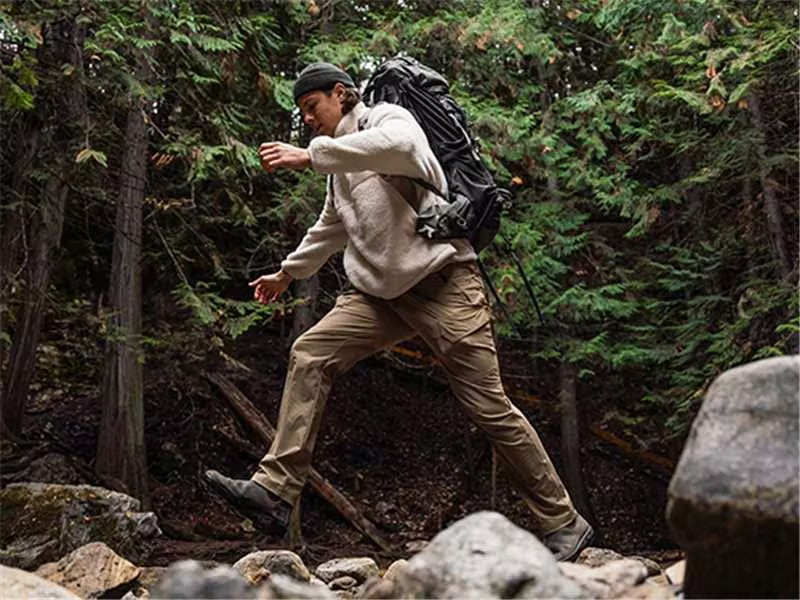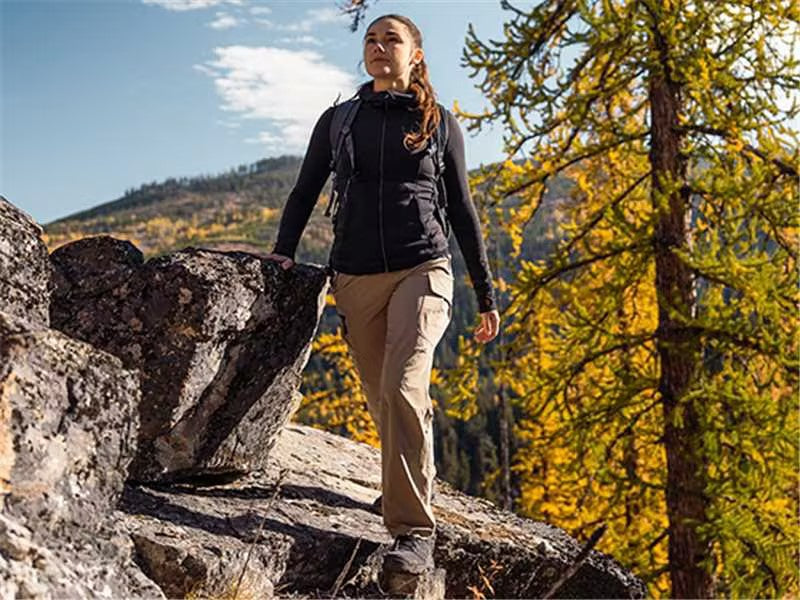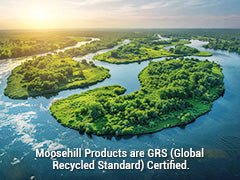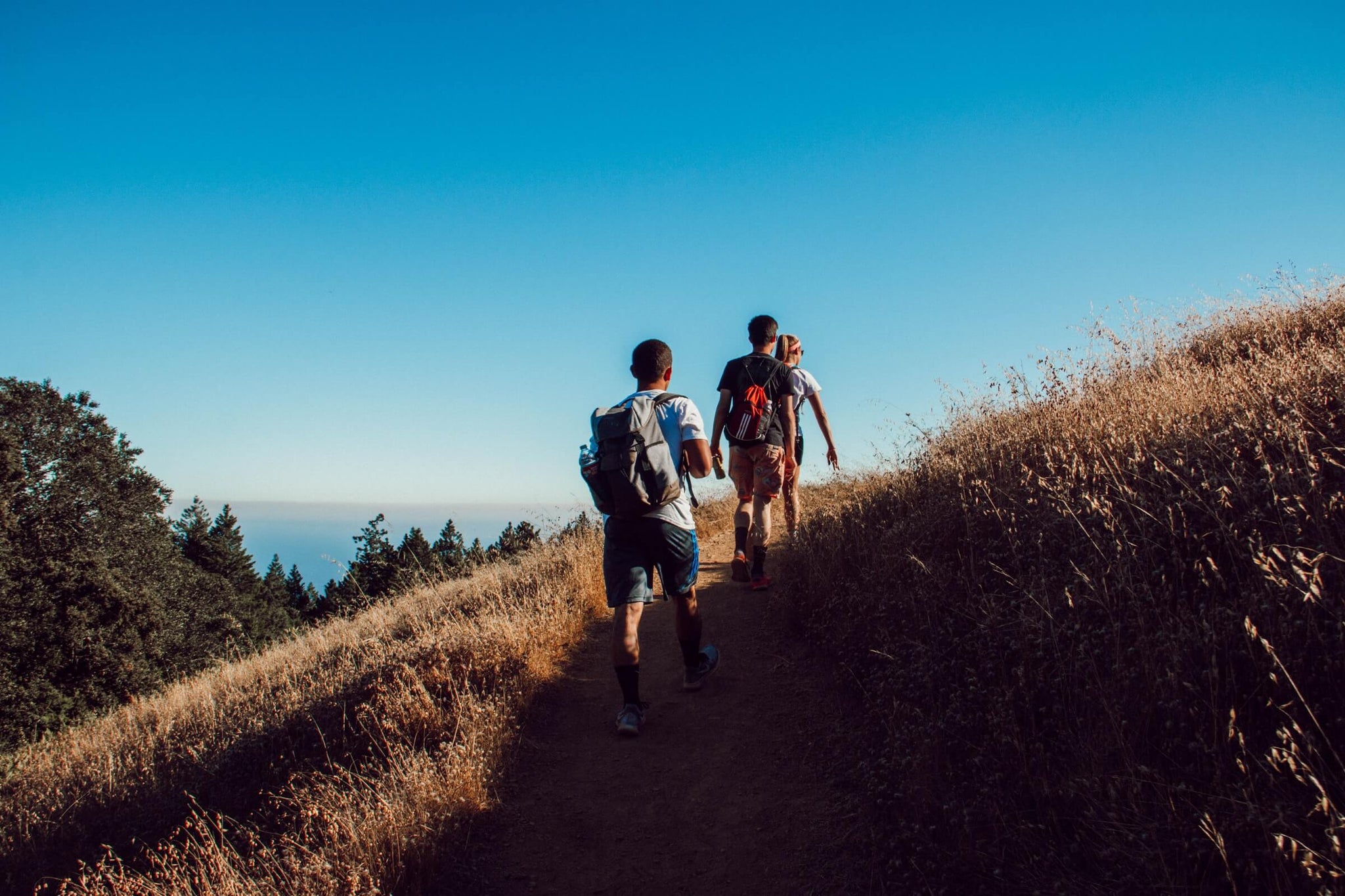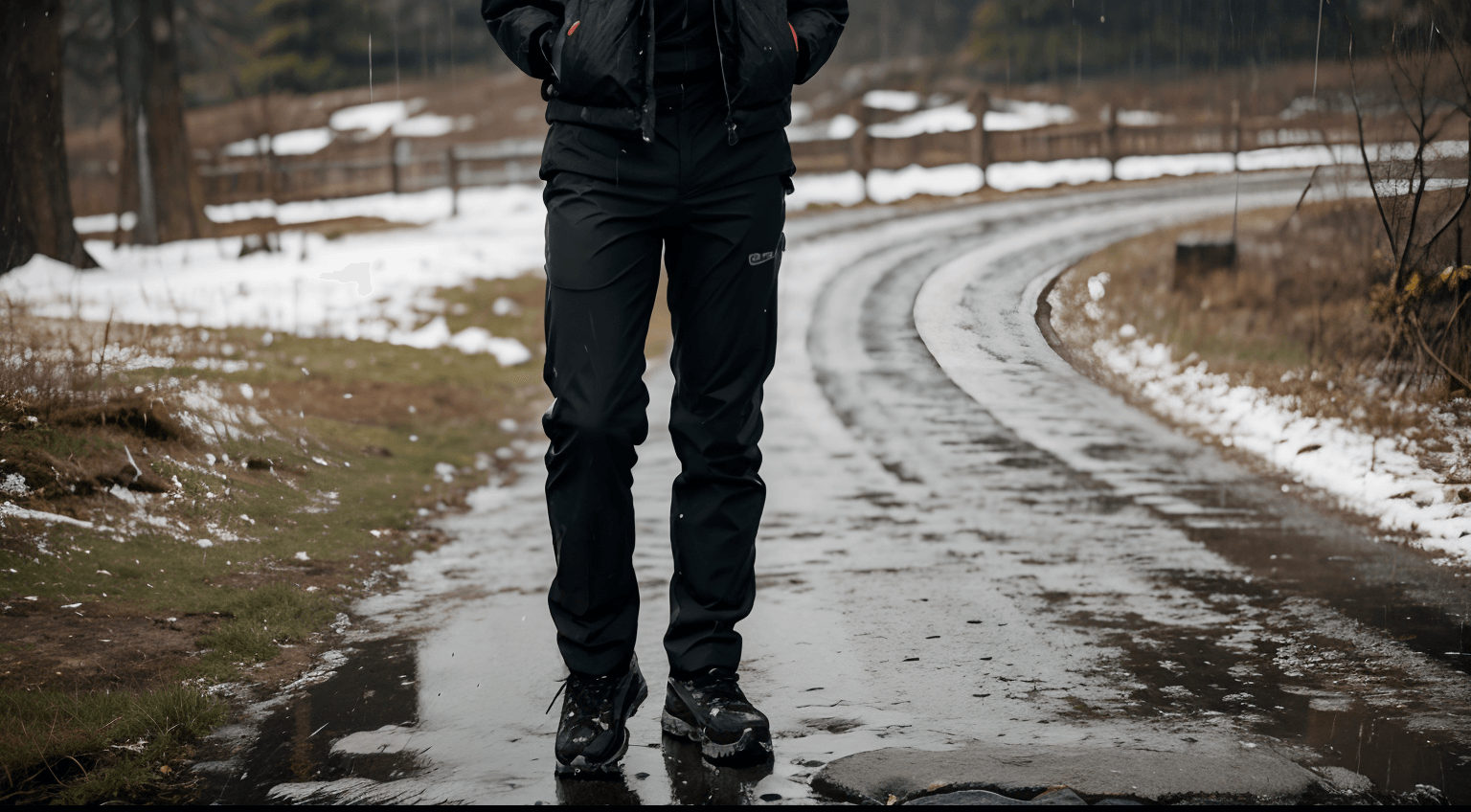8 Questions about Hiking & Climbing Pants: Material, Length, Fit
- Is there a difference between hiking pants and trekking pants?
- How do I find the right hiking pants?
- Why do I still need special hiking pants?
- Why do modern hiking pants use functional materials?
- Which material is suitable for which kind of travel?
- What is the difference between hiking pants and travel pants?
- What do I need to pay attention to when it comes to equipment?
- Fit and length: How should my hiking pants fit?
Functional, comfortable and well thought out down to the smallest detail - modern mountain sports pants are perfectly suited to the needs of outdoor athletes. But what are the functional materials and what are the differences between the models? Is there a difference between trekking pants and hiking pants?
-
Is there a difference between hiking pants and trekking pants?
The term trekking pants is often used as a synonym for hiking pants. Therefore, there is initially no technical difference between hiking pants and trekking pants. Both names are suitable for sturdy, functional and functional pants for hiking, mountain tourism and trekking. In my own language, hiking pants are just "hiking pants" anyway.
-
How do I find the right hiking pants?
As is often the case with outdoor gear, the question of planning uses arises before purchasing hiking or trekking pants. Will the tour be into alpine terrain, are you going on a Scandinavian hike or are you planning to hike in the lower mountain ranges? Should the pants be used in the spring and fall, summer or year-round? Based on these questions, you can quickly determine some requirements for the material, cut details and functionality of your hiking pants.
-
Why do I still need special hiking pants?
Functional materials make modern hiking pants the ideal companion for hiking or travel: quick-drying, strong and stretchy fabrics allow you to move freely and wear them comfortably on the trail. In addition, many hiking pants are made of materials that are optimized for specific areas of use. Depending on the construction (with or without membrane), pants made of soft shell laminates, for example, offer protection against wind and weather and a degree of insulation depending on the material thickness/variant. Pants made of a tightly woven cotton-synthetic blend are abrasion-resistant, particularly breathable and mosquito-proof.
-
Why do modern hiking pants use functional materials?
Compared to the knee-length breeches that were popular before the 1980s, modern hiking pants score high marks due to the use of functional materials. Compared to cotton fabrics such as denim and cords, synthetic fabrics or blends provide better protection from wind and weather. For example, cotton jeans will immediately absorb water in a gross rain, become heavy and then slowly dry out, while synthetic fabrics made from polyester or polyamide typically absorb less water and transport it outside quickly. If the shower turns into a downpour and the hiking pants get really wet, the synthetic fabric becomes dry again in a short time. Jeans or cotton thread pants have bad cards to play here.
In addition, functional synthetic blends ensure a comfortable wearing climate on the skin, as moisture released by the body is quickly released to the outside without the pants starting to "stick". The antibacterial finish also prevents the formation of unpleasant odors in hiking pants.
-
Which material is suitable for which kind of travel?
Today, the materials used in hiking pants are more diverse than ever before. Many materials are specially trimmed for use in special areas and offer more or less insulating properties, mosquito protection or are particularly strong and abrasion resistant. Different materials are often combined with each other.
A.Hiking pants made of lightweight, stretchy material
Those who mainly do day hikes in the Alps or lower mountain areas are particularly fond of using lightweight, quick-drying synthetic materials in their hiking pants, which are highly breathable and windproof. In most cases, these are fine polyamide or polyester fabrics, which also protect against UV radiation and mosquito bites. The double-stretch fabric, which can be stretched longitudinally and laterally, provides exceptional comfort. This ensures a unique freedom of movement. No clips here, no clips here. The hiking pants fit perfectly.
Suitable for: Versatile pants for medium temperature hikes and mountain trips from spring to autumn.
B.Softshell material hiking pants
Now proven softshell materials are also becoming increasingly popular in mountaineering pants - especially in temperate latitudes or alpine regions. Available with or without membrane, softshells are basically plain fleece and hard shell.
With membrane: windproof, improved weather protection, not breathable
Without membrane: windproof, very breathable
This fabric is characterized by a soft hand, an exceptionally tight and elastic fiber bond, a relatively smooth surface, and water, wind and stain resistance. An ideal combination that promises a lot of comfort in the form of hiking pants.
Perfect for: traveling in cool to cold temperatures in alpine or mild climates. Softshell pants are also suitable for ski touring, cool and wet conditions or stormy weather.
Tip: Softshell pants are available in a variety of material thicknesses, so they cannot be used exclusively for alpine travel and hiking.
C.Hiking pants made from a waterproof cotton-polyester blend
Those who value the natural feel, durability and maximum breathability of hiking pants are more demanding of the material they are made of. Hiking pants made of a waterproof cotton-polyester blend are very shi'he
Perfect for: hiking and trekking in the Nordic countries, but also for day trips and multi-day trips in the Alps.
D.Waterproof Mountaineering Pants
Waterproof mountaineering pants or so-called rain pants are made of hard shell laminate and offer reliable protection against wind and rain thanks to the integrated weather membrane.
Suitable for: Rain protection in bad weather and on multi-day trips (e.g. through the Alps)
E.Zip off pants( or convertible pants)
Zip off pants are a real matter of faith for hikers. While some people swear by removable legs - especially when great temperature swings are expected on the trail - others complain that they limit wearing comfort due to the circumferential zipper, or are bothered by the look. The only thing you can do here is try to decide for yourself if you are uncomfortable with your freedom of movement due to the separation. Alternatively, many manufacturers offer models with integrated straps for attaching rolled-up legs. Long hiking pants quickly "shrink" to 3/4 pants.
-
What is the difference between hiking pants and travel pants?
Sometimes the colloquial term "touring pants" appears in outdoor jargon. There is no clear definition of what type of mountain sweatpants it is. In mountain time, we associate the term sports pants with the fact that these pants are made due to the technical design and equipment requirements for mountain adventures: hiking pants and ski pants.
-
What do I need to pay attention to when it comes to equipment?
When it comes to equipment, pay attention to functionality and wearing comfort: the waistband and pockets should support your freedom of movement and, in general, the mountaineering pants should fit well so you can carry them with you. Clever details such as boot loc hooks or adjustable leg hoops keep snow and debris out, while reinforcement in particularly stressed areas ensures a long life. So-called zippered pants can be worn both short and long and offer maximum flexibility in a single garment for a wide range of uses.
-
Fit and length: How should my hiking pants fit?
The perfect fit for outdoor or hiking pants can be broken down into one word: comfort. This means: the pants should be tight enough to prevent slipping, but also provide room for sweeping movements and big steps.
In terms of leg length, outdoor pants offer better protection from injury to the legs, as well as protection from solar radiation on more demanding trips in rocky terrain. The length should be chosen so that it is near or just below the ankle. In no case should the pants be so long that you will step on them in the heel area while hiking. This can definitely represent a safety or fall risk in the field, and can also be prevented by width-adjustable leg braces - using elastic cords, for example. On the other hand, outdoor pants that are too short can impractically slip over the body of your shoes.
For relaxed travel and summer conditions, shorts are certainly not appropriate in the mountains. If you want to be on the safe side, use a flexible zippered model and pack leg warmers in your backpack as a backup.

